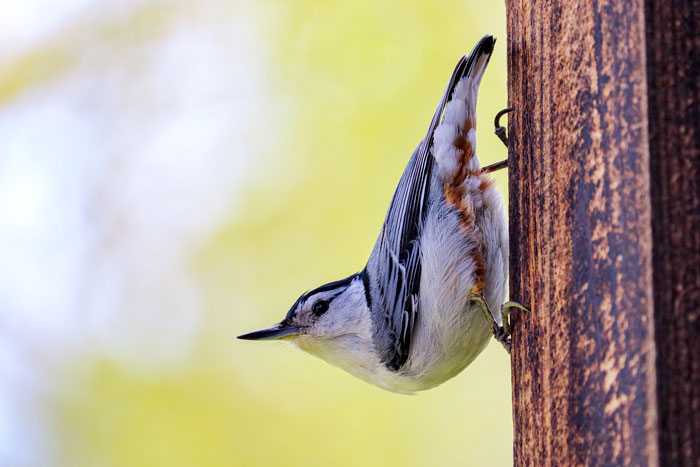
I can recall the first time I had ever observed the antics of the white-breasted nuthatch. Within a short period of time after hanging suet next to my other bird feeders, one of these curious birds appeared. I took notice of other birds such as black-capped chickadees and woodpeckers enjoying the suet holding themselves in an upright position while enjoying this new treat. Not the white-breasted nuthatches though, they were feeding on the suet feeder, while hanging upside down! I thought this to be strange but later learned this is a common practice of this species of bird.
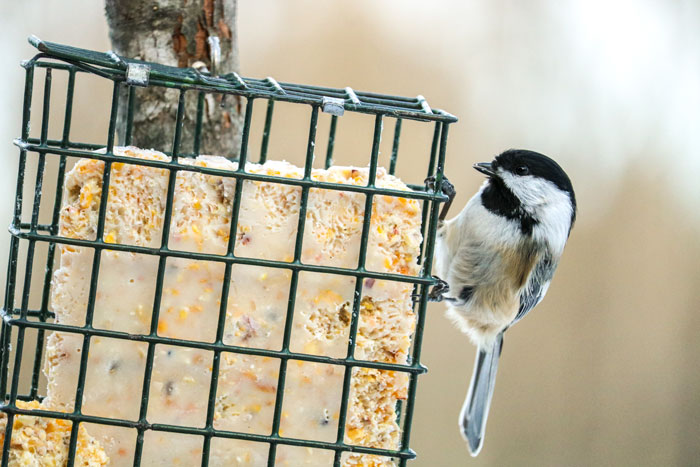
A black-capped chickadee Poecile atricapillus feeding from a suet feeder.
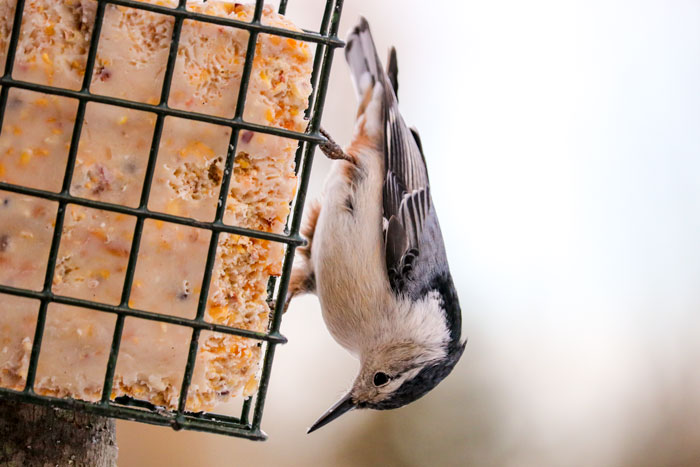
A white-breasted nuthatch perched a suet feeder.
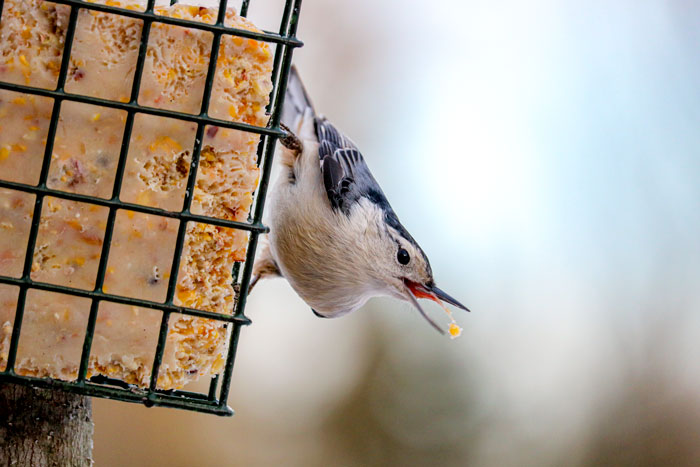
A white-breasted nuthatch feeding from a suet feeder.
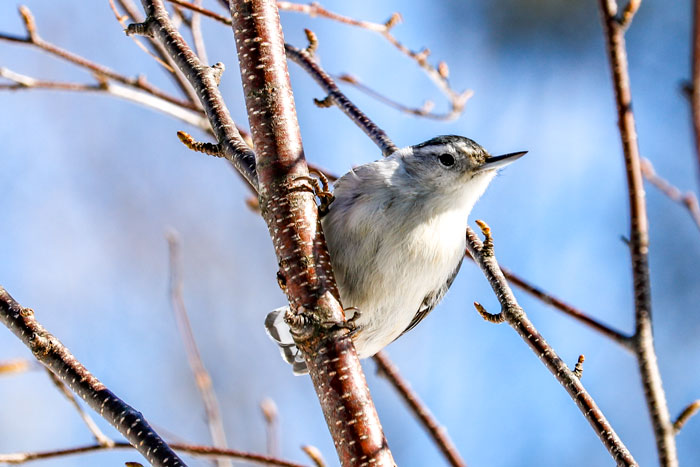
Being that white-breasted nuthatches are common at bird feeders, this provides us a good opportunity to observe their behavior. I have lost count as to how many times I have watched these interesting birds take a seed or nut from the feeder, fly to a nearby tree, and tuck it away in the bark. These birds will then hack away at it to open it, or leave it for retrieval later. It is nothing short of amusing to watch these birds not only climb a tree but to observe their gravity-defying ability to walk down the trunk of a tree!
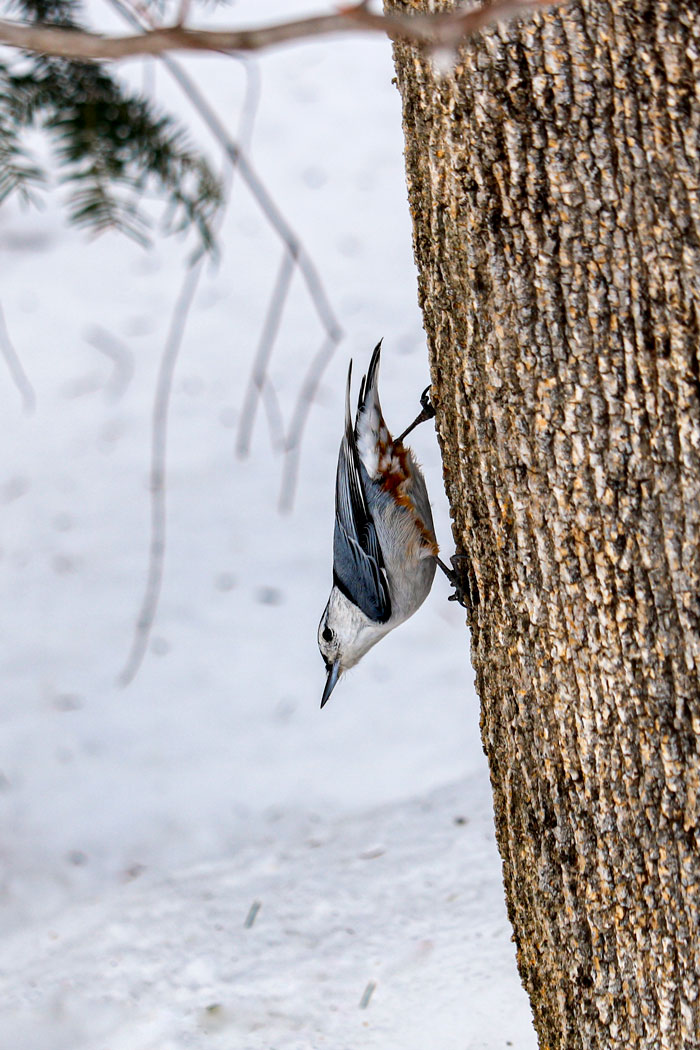
Not only are these birds interesting to watch, but to listen for as well. While I am out photographing birds in the woods, I often hear these birds before I see them. They have a distinct call and song. Their call starts out slow and then gets faster. I will sometimes hear one nuthatch and then two of these birds talking to each other. It is quite entertaining to hear them communicate. Their increase of notes almost sounds like they are laughing. Perhaps they all share an inside joke, we are all not supposed to know about. The echoes of their calls between the trees always make me smile and I think there is that crazy bird again. By the way, “crazy birds” is the nickname I have given these funny birds. I have found them to be quite social as well. Their curiosity will often get the best of them and they will come quite close to me. They will often check me out, say hello and then go about with their business. What a peculiar little bird the white-breasted nuthatch is and I would like to share some more interesting information about them.
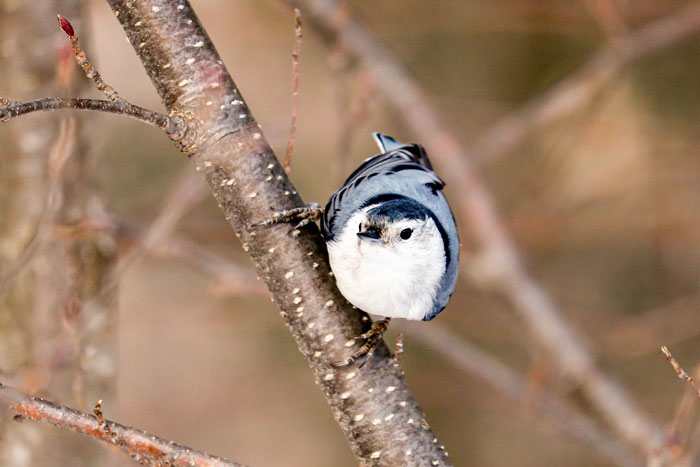
Information About the White-breasted Nuthatch
The white-breasted nuthatch Sitta carolinensis is a small songbird belonging to the nuthatch family Sittidae. These birds are commonly found across much of temperate North America.
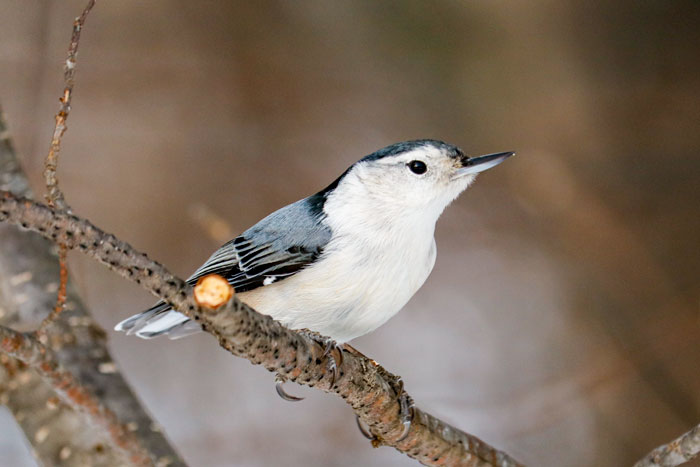
Why is a Nuthatch Called a Nuthatch?
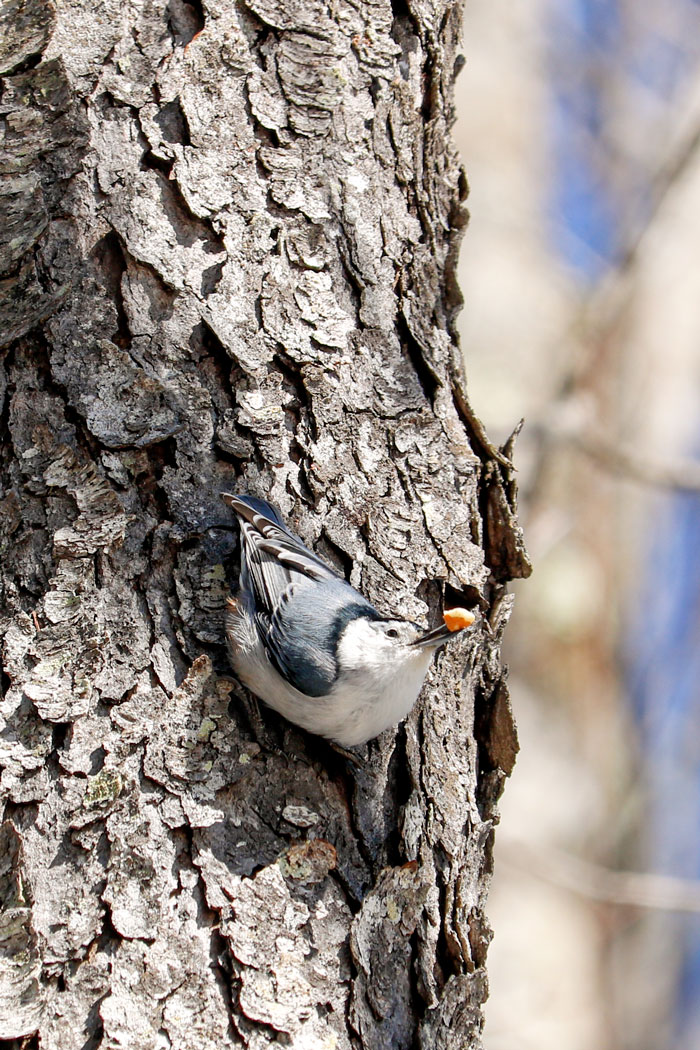
The name nuthatch could have possibly resulted from “hatch” the Middle English word for “hack.” Nuthatches practice the habit of wedging their food such as nuts and seeds into tree bark and then “hacking” (thus “hatching”) away at it with their pointy bill to extract or hack away at the shells of a seed or nut to open and consume at a later time.
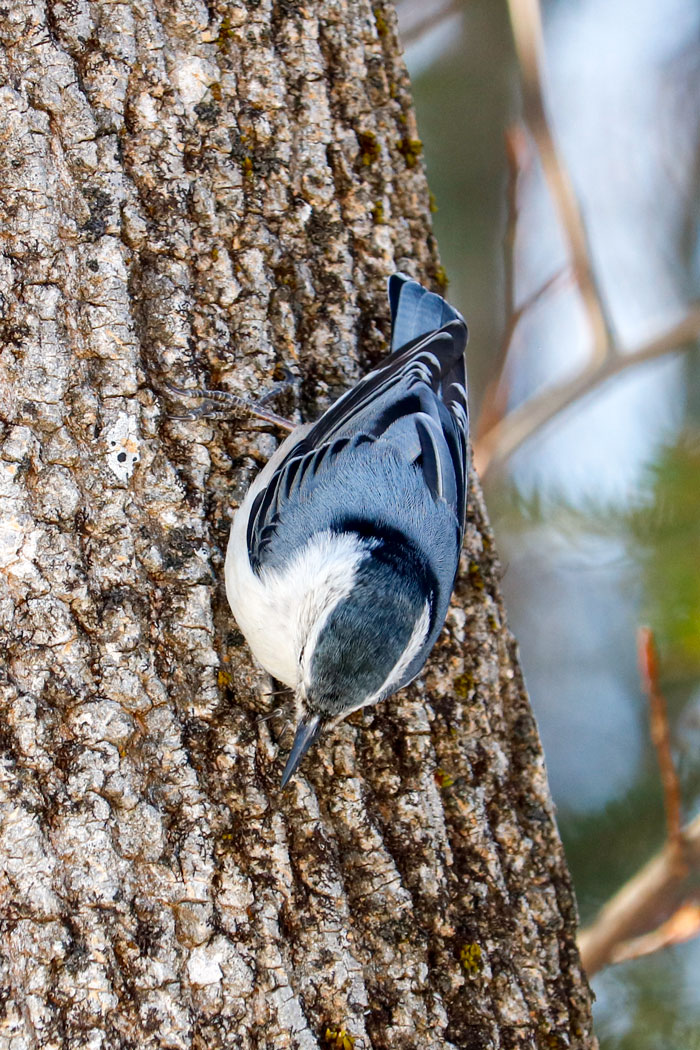
Types of Nuthatches
There are four species of nuthatches in North America; the white-breasted nuthatch, red-breasted nuthatch, and pygmy nuthatch which live in areas of Canada and the United States. The brown-headed nuthatch can be found in the southeastern states. Personally, I have only seen white and red-breasted nuthatches. I usually have at least one pair of each species that come to the feeders every year. One of these days, I hope to see the other two types of nuthatches.
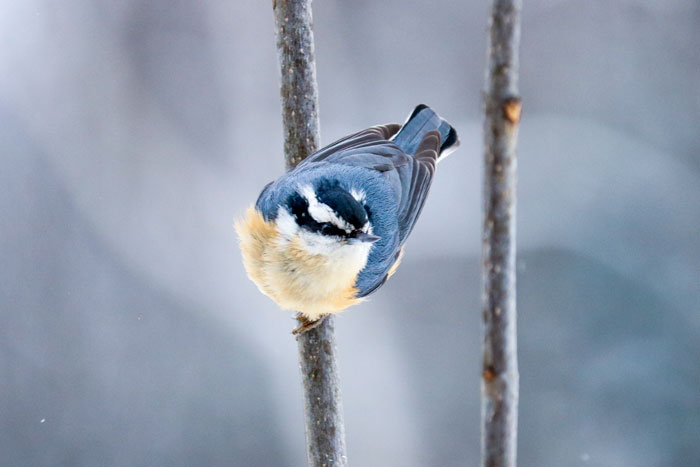
Here is a photograph of a red-breasted nuthatch Sitta canadensis, that I had taken last winter.
Description of the White-breasted Nuthatch
Even though the white-breasted nuthatch is the largest of the species, it is still considered to be a small bird. They have large heads and practically no neck. The tail is very short and the bill is long and narrow as well as being very powerful. Their bills can be straight and to add to their cuteness, some of these birds can have a slight upturn at the end. They also have strong claws that aid in their unique way of climbing up and down trees.
White-breasted nuthatches have blue-gray upper parts, with a white face and underparts. It has a black or gray cap. The lower belly often has a chestnut color. Females look similar to males but they have a grayer cap.
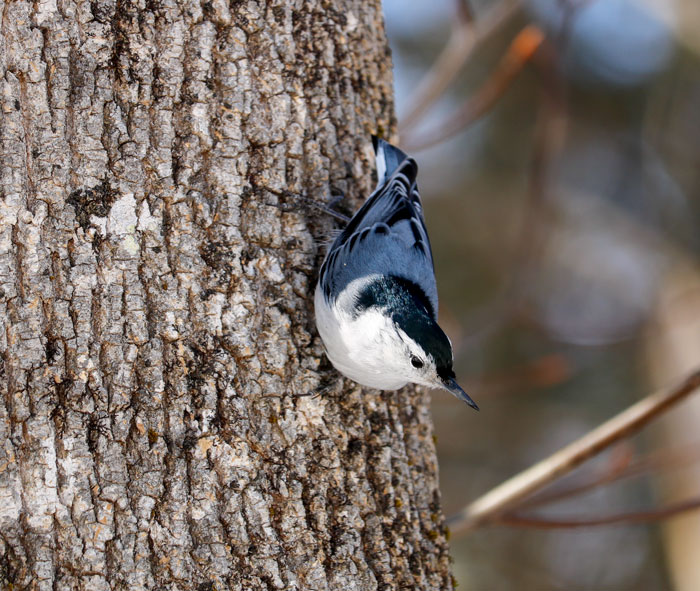
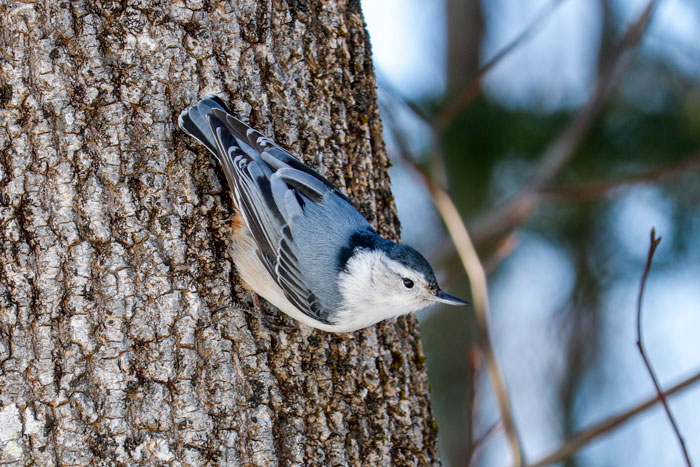
White-breasted Nuthatch Behavior
White-breasted nuthatches are considered agile birds that climb and creep along trunks and large branches. They use their straight and pointed bills to probe the grooves of bark. While foraging, nuthatches have the ability to turn sideways and upside down on vertical surfaces. If you ever observe this practice, you will notice they don’t utilize their tails as fulcrums the way woodpeckers do.
These birds’ diets mainly consist of insects, such as the weevil larvae, wood-boring beetle larvae, other beetles, treehoppers, scale insects, ants, and gall fly larvae, caterpillars, stinkbugs, and click beetles, as well as spiders. They also eat seeds and nuts, including acorns, hawthorn, sunflower seeds, and sometimes crops, such as corn. If you enjoy feeding wild birds, these birds will eat sunflower seeds, peanuts, suet, and peanut butter.
Nuthatches forage mainly on the trunks and larger limbs of trees while exploring and climbing all surfaces. They will also sometimes feed on the ground. During the fall and winter months, they will regularly cache food in the crevices of bark.
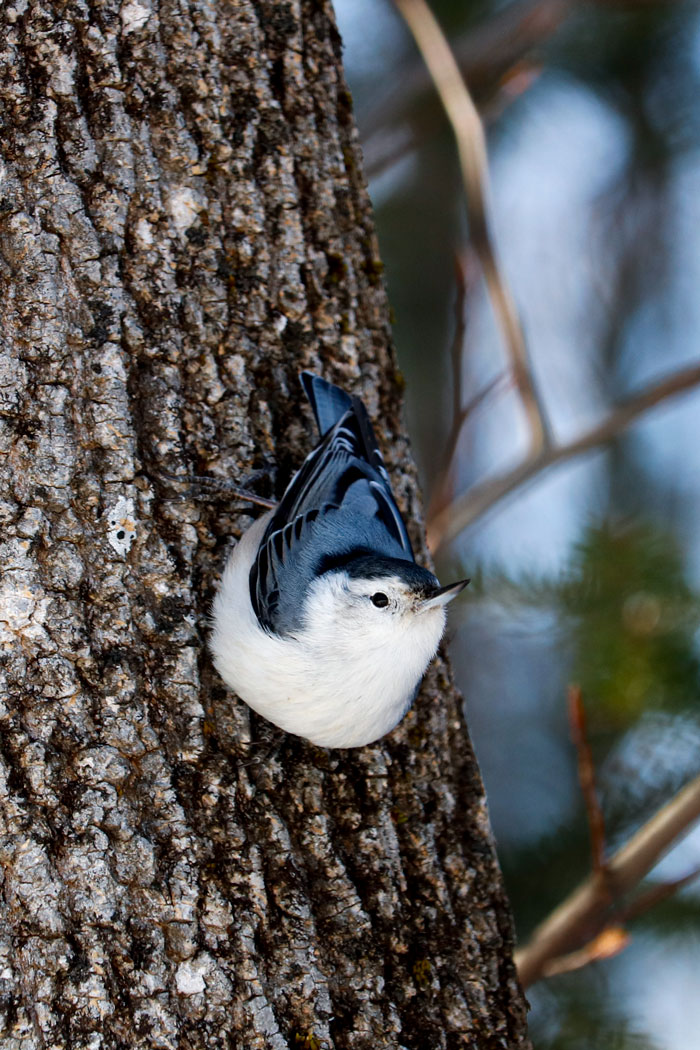
White-breasted Nuthatch Call & Song
The call of both sexes of the white-breasted nuthatch is a loud and nasaly yank that is often repeated a few times in a row. When looking for food, males and females will exchange a soft yink.
Male white-breasted nuthatches sing in late winter and spring. This consists of a series of low rapid, nasal, fairly low-pitched identical notes of whi, whi, whi, whi, whi whi or who, who, who, who that last two to three seconds. These are made up of a half-dozen to a dozen nearly identical notes. Males sing these songs at two rates, with the faster version packing in twice as many notes in the same amount of time. The fast version is believed to be the main song used for attracting a mate.
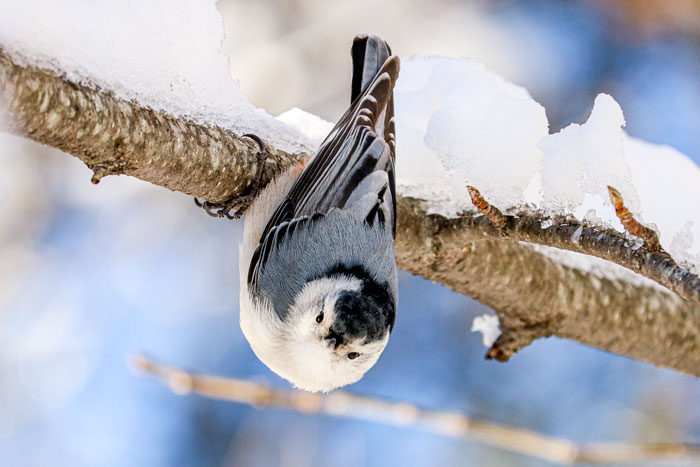
White-breasted Nuthatch Habitat
White-breasted nuthatches prefer mature woods and woodland edges. They can be found in areas with deciduous trees, including maple, hickory, basswood, and oak, as well as in areas with some conifers.
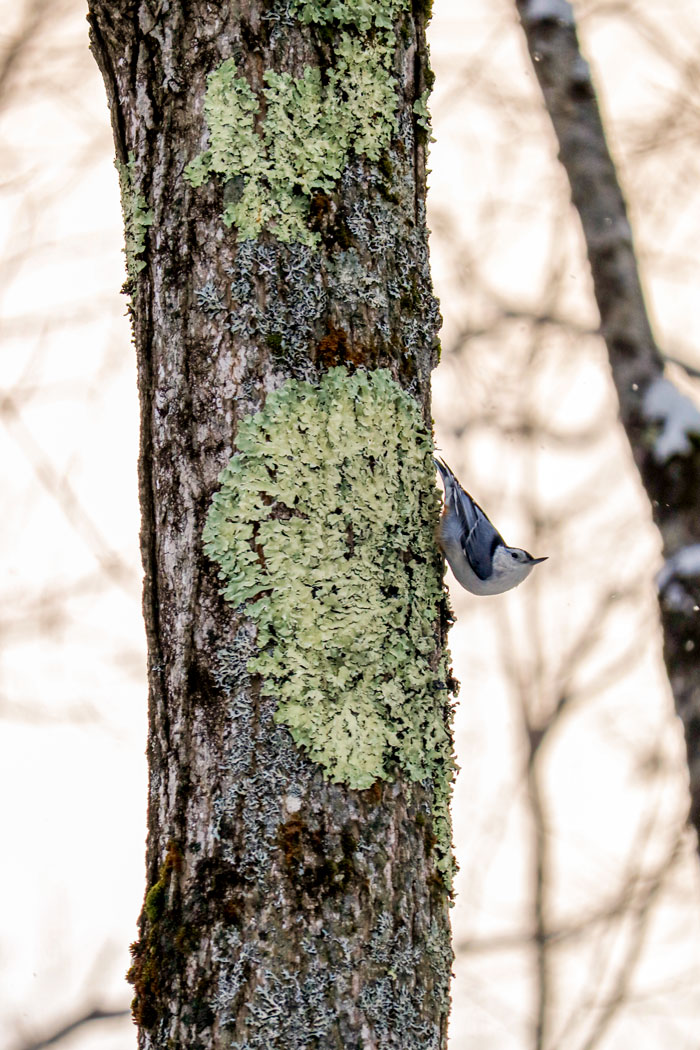
White-breasted Nuthatch Breeding & Nesting
Courtship behavior begins in late winter. Pairs will remain together in nesting territory all year and possibly for life. The nest site consists of a large natural cavity or old woodpecker hole, usually fifteen to sixty feet above the ground. They may spend minutes at a time sweeping the outside and inside of the nest with a crushed insect held in the bill. This may help repel predators by extracting the secretions of insects. They will also sometimes add mud to the rim of the nest entrance.
There are usually five to nine white, spotted with reddish-brown eggs. Females incubate the eggs for a period of twelve to fourteen days. Both parents feed the young. It is estimated that the young leave the nest for about fourteen to twenty-six days. They have one brood per year.
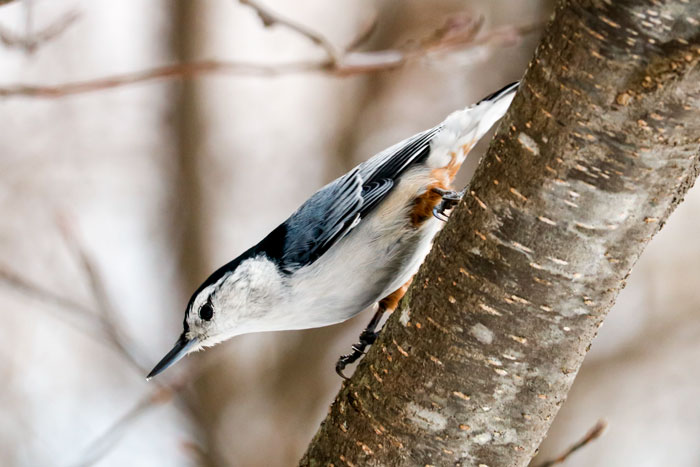
White-breasted Nuthatch Migration
The white-breasted nuthatch is considered a permanent resident. Occasionally, these birds may move south in the western and northern parts of the United States. This is an unexplained irruptive movement. This type of behavior is observed more in the red-breasted nuthatch.

Thank you for reading and I hope you enjoyed learning about the white-breasted nuthatch. If you have anything to share about your experiences with these charming birds, please feel free to leave a comment. I would love to hear from you.
Resources used for this post:
allaboutbirds.org & audubon.org
Leave a Reply